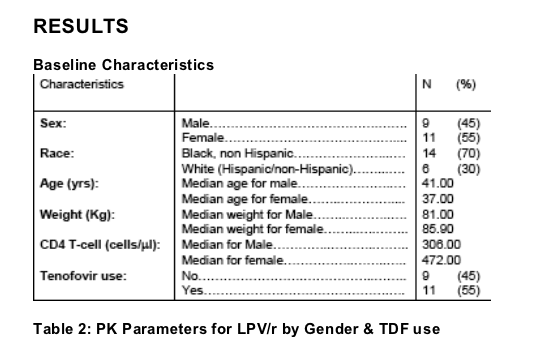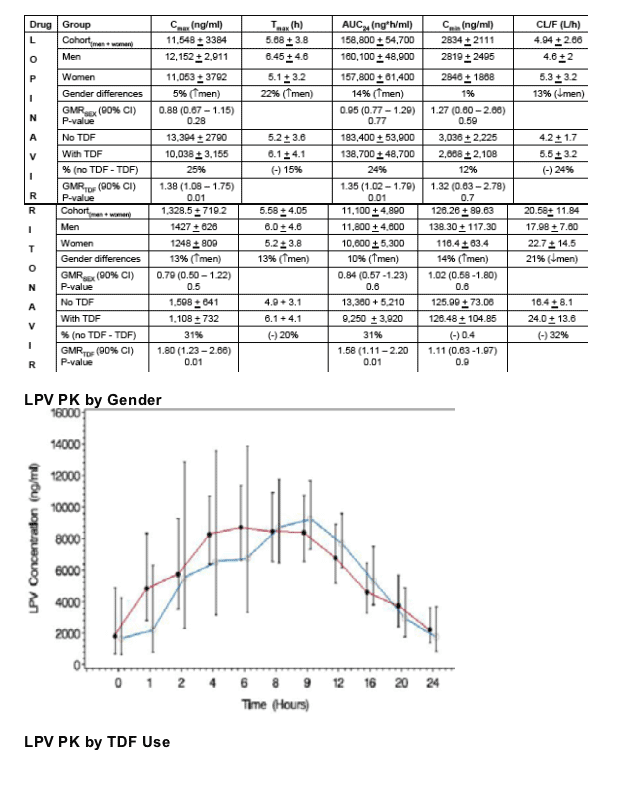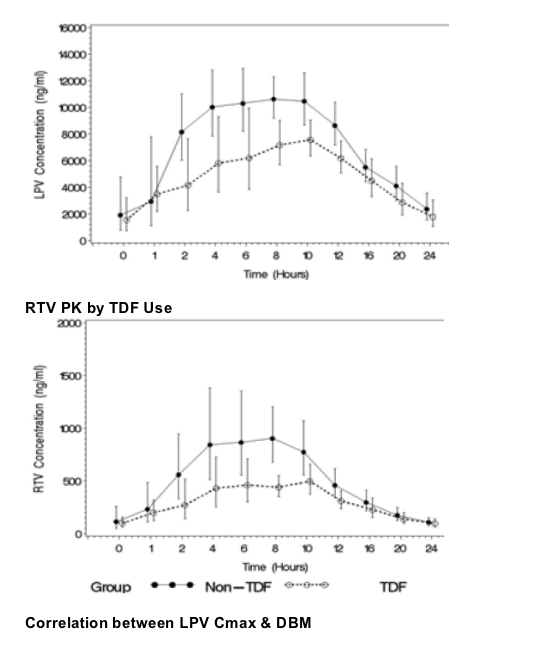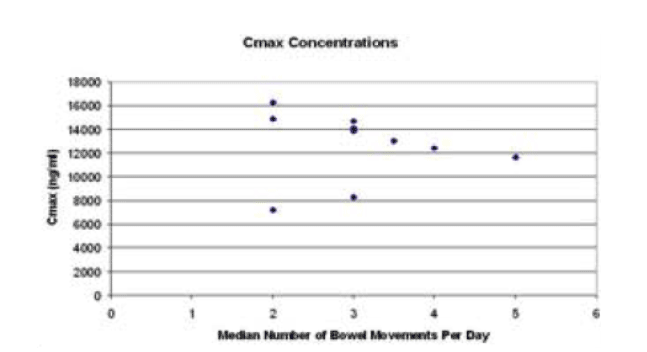 |
 |
 |
| |
Lack of Sex Differences in Once Daily Lopinavir/ritonavir Pharmacokinetic Profile
|
| |
| |
Reported by Jules Levin
HIV8 Glasgow Nov. 12-16, 2006
1Ofotokun I, MD, MSc., 2Chuck SK, Pharm.D., 1Palau M, BS.,
3Acosta E, Pharm.D., and 1Lennox JL, MD.
1Emory University, Atlanta, GA, USA; 2Abbott Laboratory, Abbott Park, IL, USA and 3University of Alabama, Birmingham, AL, USA.
ABSTRACT
Purpose of the Study: PK variability occurs with antiretroviral (ARV) drugs. Factors including sex are known to explain PK variability. Since virologic response and toxicity often correlate with ARV exposure, the extent to which PK varies by sex could have clinical relevance. The impact of sex on once daily LPV/r PK and the relationship between LPV/r exposure and daily bowel movement was evaluated.
Methods: Steady state intensive PK plasma samples were obtained from virologically suppressed HIV+ pts whose LPV/r doses had been modified from 400 mg BID to 800/200 mg QD as soft gel capsules 2-weeks prior to sampling. LPV/r assay was performed by HPLC. PK parameters estimated by non-compartmental method were reported as 90% CI about the geometric mean for men vs. women. Self reported daily bowel movement was obtained and assessed for correlation with LPV exposure.
Summary of Results: Subjects were mostly Black (70%). Median age (men=41 yrs, women=37 yrs). Median wt (men=81 kg, women=86 kg). LPV QD PK was similar to historic data. No sex differences were observed in LPV/r Cmax, AUC24, or Cmin. The 800/200 mg QD was associated with similar DBM profile as the 400/100 mg BID. No significant correlation was observed between daily bowel movement and LPV Cmax, (P=0.28).
Conclusions: (1) Steady state LPV/r PK was similar in HIV+ men vs. HIV+ women (2) Daily bowel movement profile was similar for QD vs. BID dosing (3) No correlation observed between LPV Cmax and daily bowel movement.
Background
The same dose of an ARV drug produces varying plasma concentrations in different individuals due to intra-individual differences in drug processing1.
Factors such as sex, race, age, body mass index (BMI), genetics, and the concomitant use of certain drugs influence plasma drug concentrations2.
Because optimal virologic response is dependent upon achieving a threshold level of ARV exposure, and because drug toxicity is often directly correlated with plasma drug concentrations, the extent to which the PK profile of a given ARV agent varies by patients' sex could have relevance in clinical HIV management.
The purpose of this study is to determine the impact of sex and tenofovir (TDF) coadministration on the PK profile of lopinavir/ritonavir (LPV/r). The relationship between dosing interval, plasma drug concentrations and the frequency of self-reported daily bowel movements (DBM) was also assessed.
Methods
Steady state intensive PK plasma samples were obtained from 20 virologically suppressed HIVinfected patients whose LPV/r doses had been modified from 400/100 mg BID to 800/200 mg QD as soft gel capsules (SGC) 2-weeks prior to sampling.
ARV drug assays were performed by high-performance liquid chromatography (HPLC). PK parameters estimated by non-compartmental method were reported as 90% confidence intervals (CI) about the geometric mean ratio (GMR) for men vs. women and TDF use vs. no-TDF.
Inter-group differences between the PK parameters of LPV and RTV were evaluated using the non-parametric Kruskall-Wallis test. A P-value of less than 0.05 was considered statistically significant.
The frequency of DBM was determined and assessed for correlation with LPV exposure.




AUTHOR CONCLUSIONS
Although the sample size is relatively small, lack of sex difference in LPV/r plasma concentrations affirms the use of a uniform LPV/r dose regardless of gender.
LPV/r PK profile observed in this cohort is consistent with historic PK data for once daily dosing3, and suggests the possibility of LPV/r dosing simplification from BID to QD particularly in treatment na´ve setting.
Our data also indicates an interaction between LPV/r and TDF wherein the Cmax and AUC24 for LPV/r were reduced in the presence of TDF, but not the Cmin.
No significant correlation was observed between the frequency of daily bowel movement and LPV plasma exposure.
References
1. Marzolinia C, et al. Efavirenz plasma levels can predict treatment failure and central nervous system side effects in HIV-1-infected patients. AIDS 2001;15:1089-1095
2. Fletcher CV, et al. Sex-based differences in saquinavir pharmacology and virologic response in AIDS Clinical Trials Group Study 359. J Infect Dis. 2004;189:1176-84.
3. Eron JJ, et al. Once-daily versus twice-daily lopinavir/ritonavir in antiretroviral-naive HIV-positive patients: A 48-week randomized clinical trial. J Infect Dis. 2004:189:265-72.
|
| |
|
 |
 |
|
|